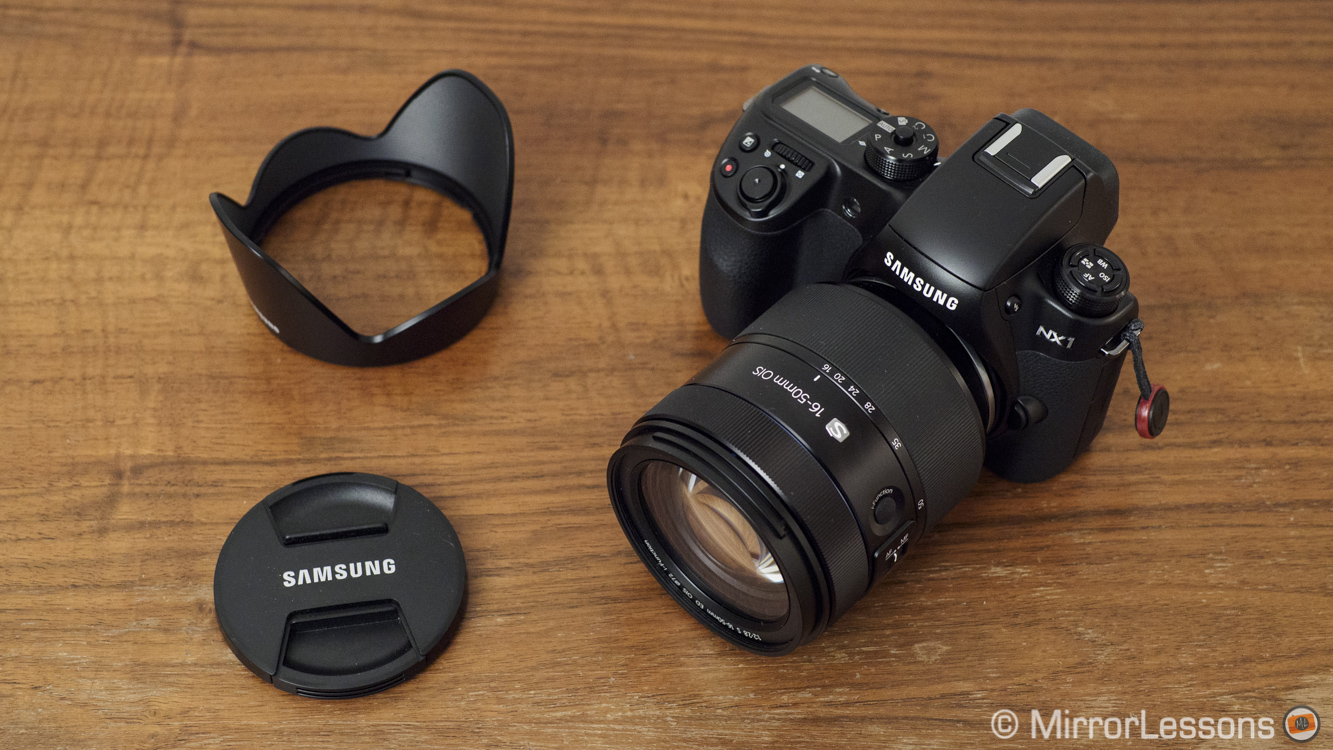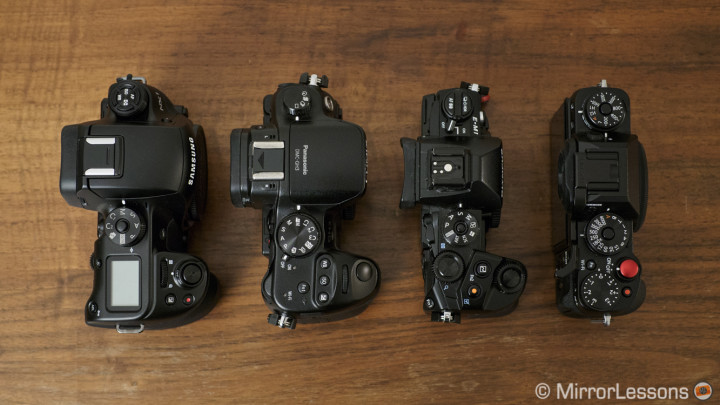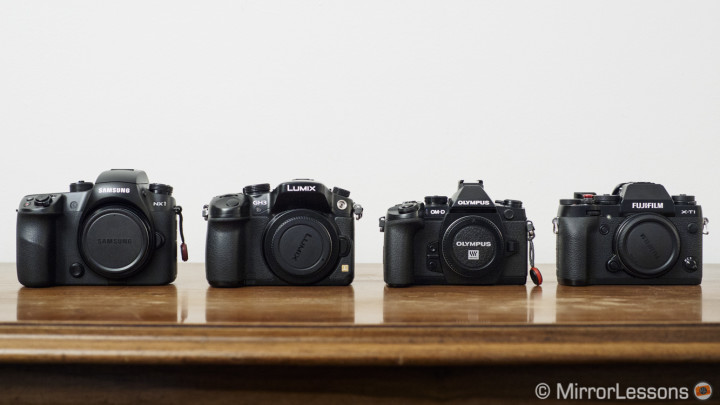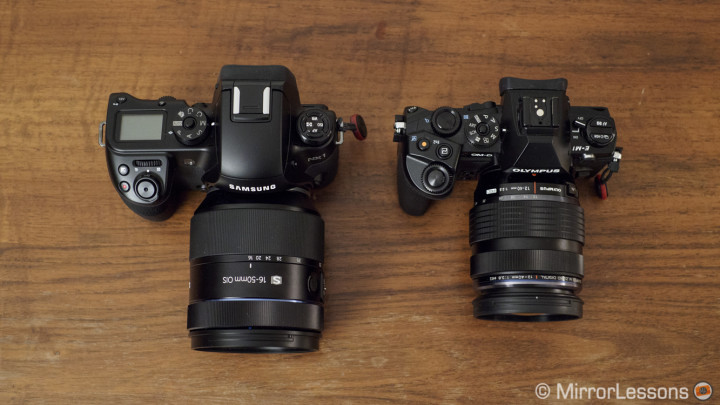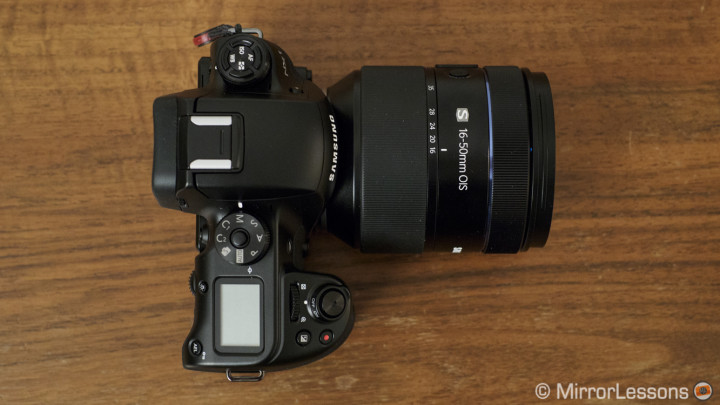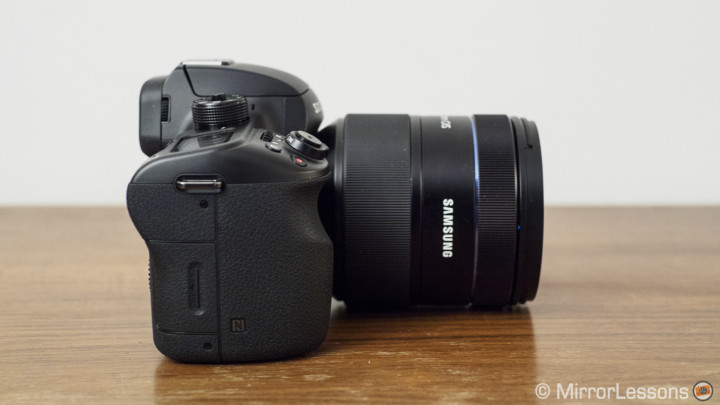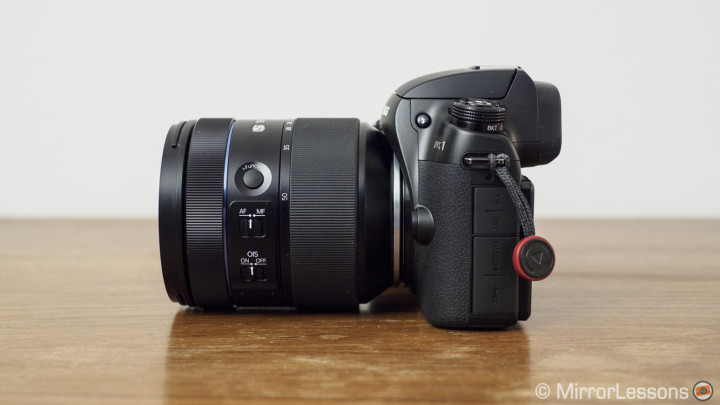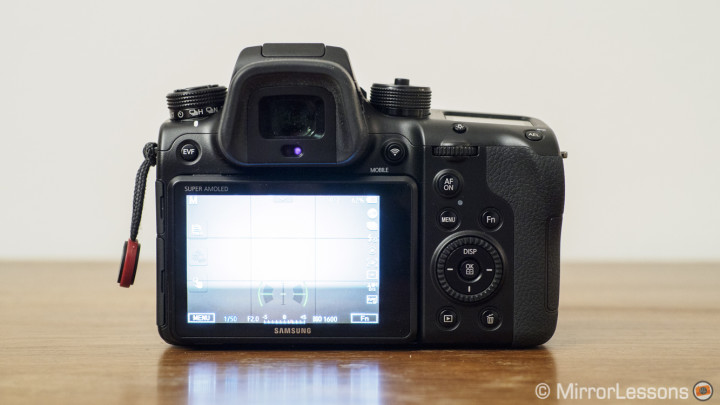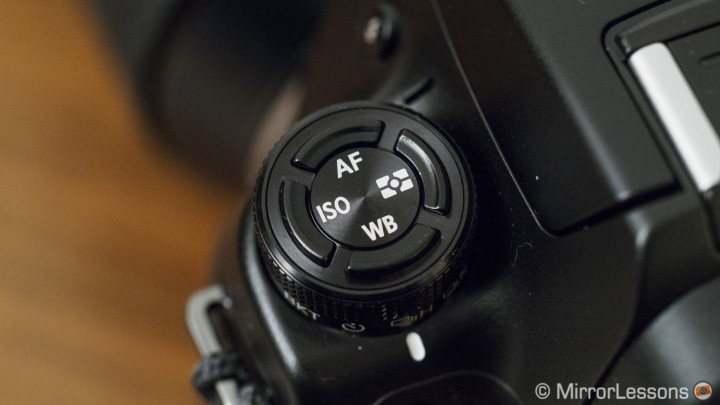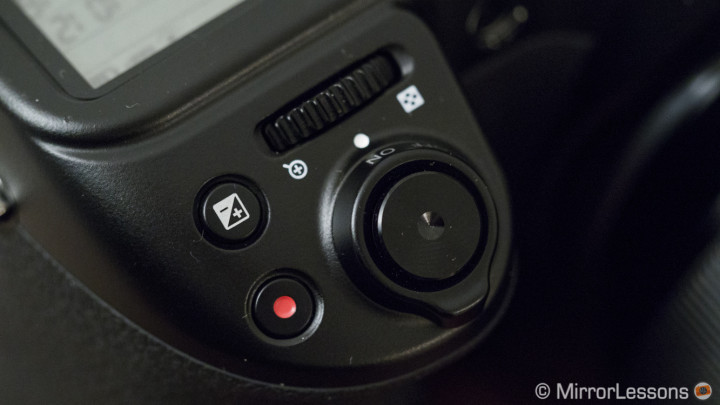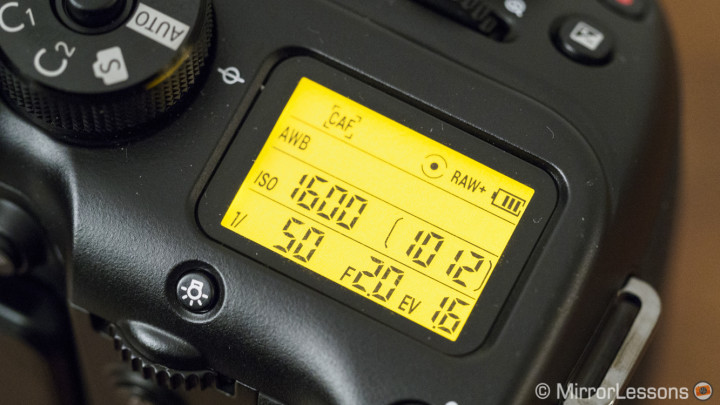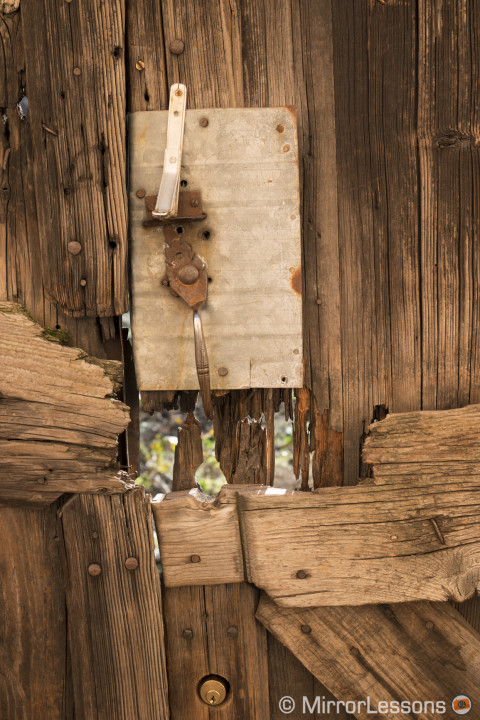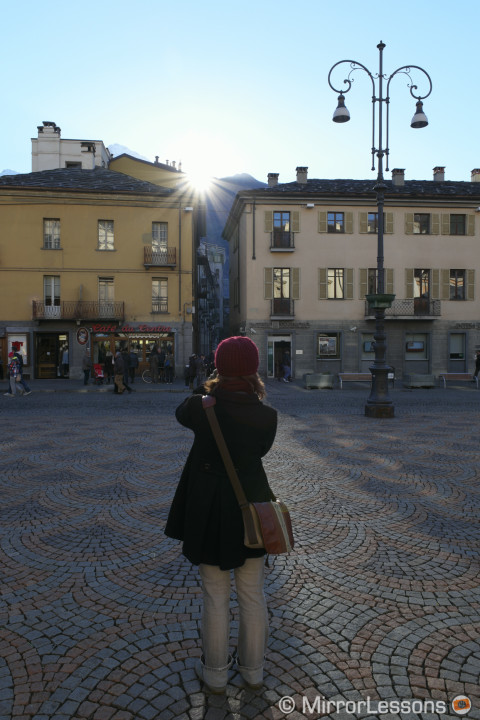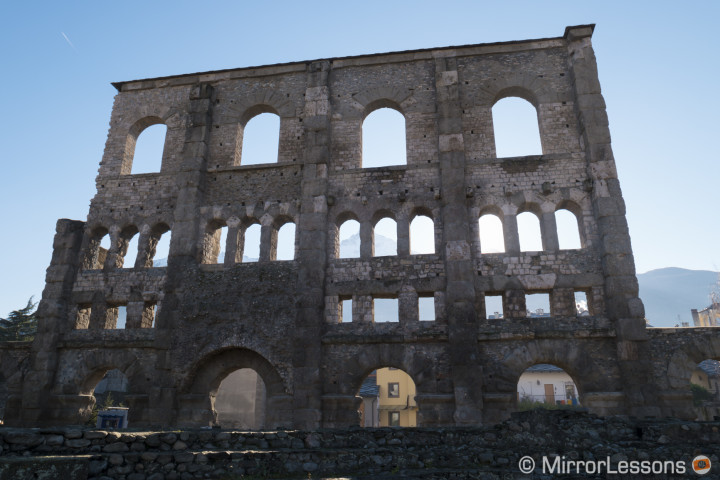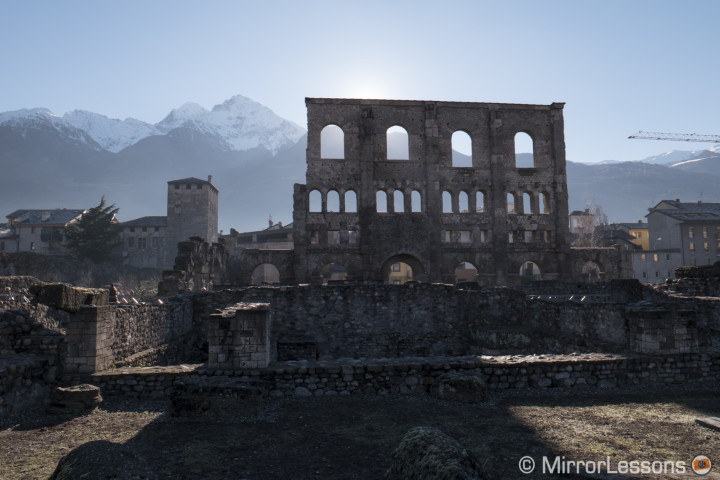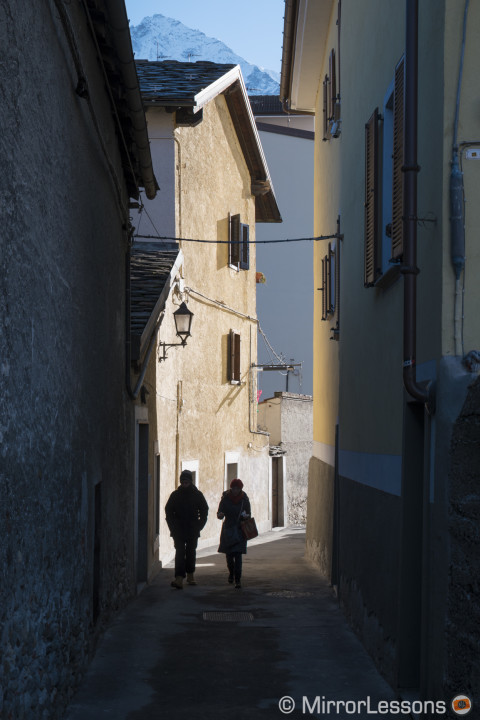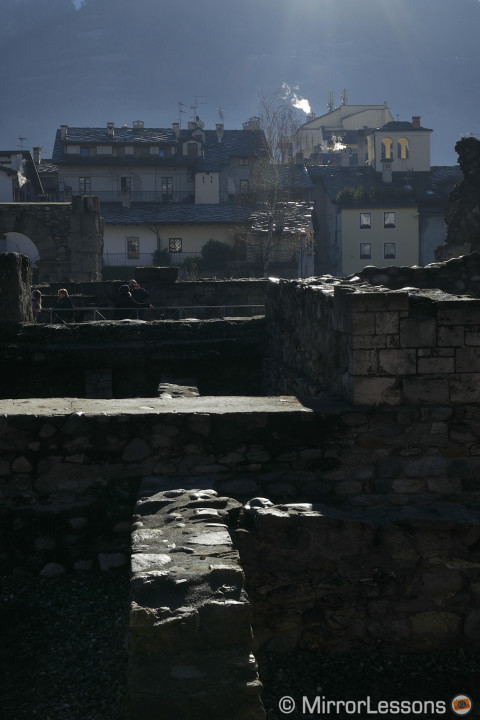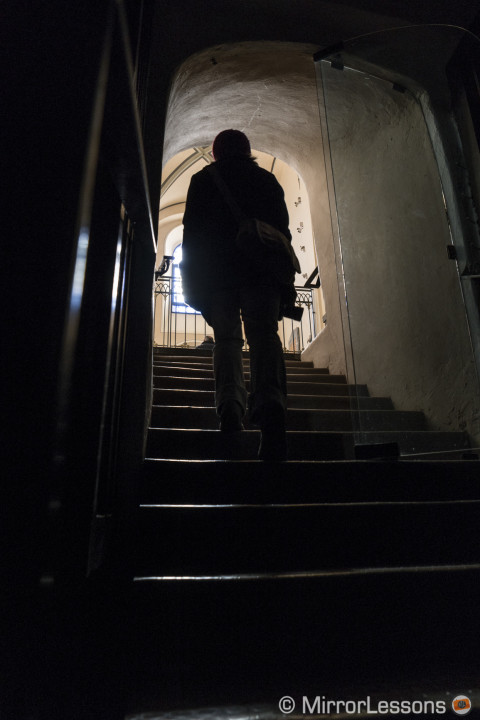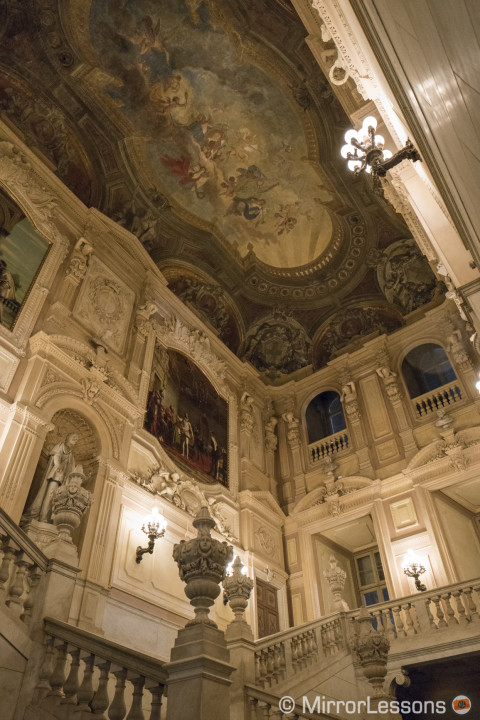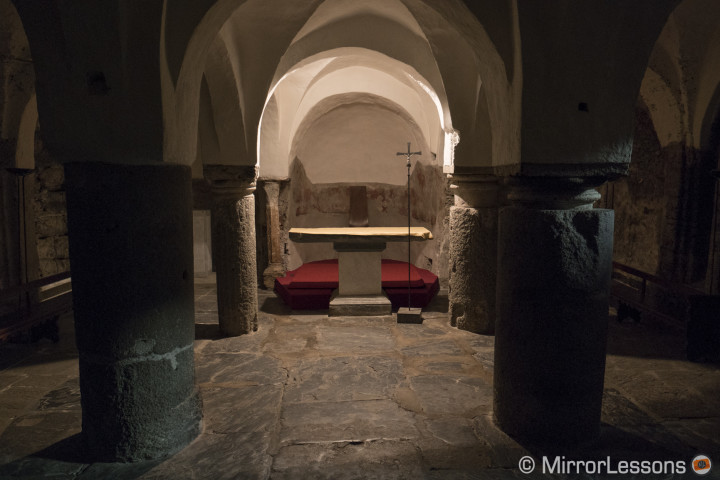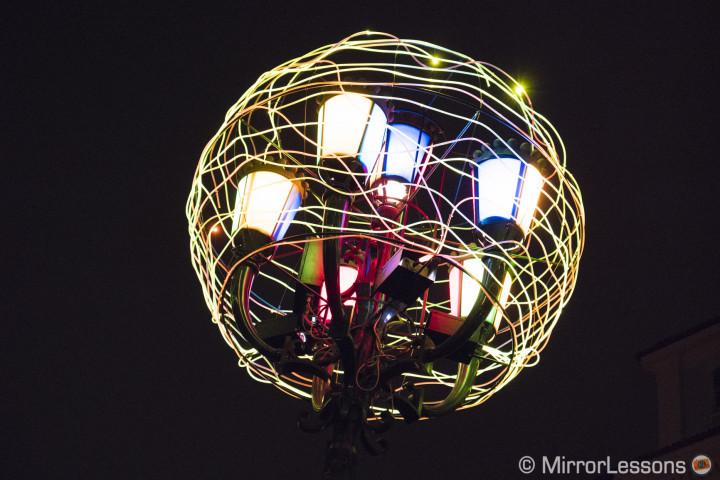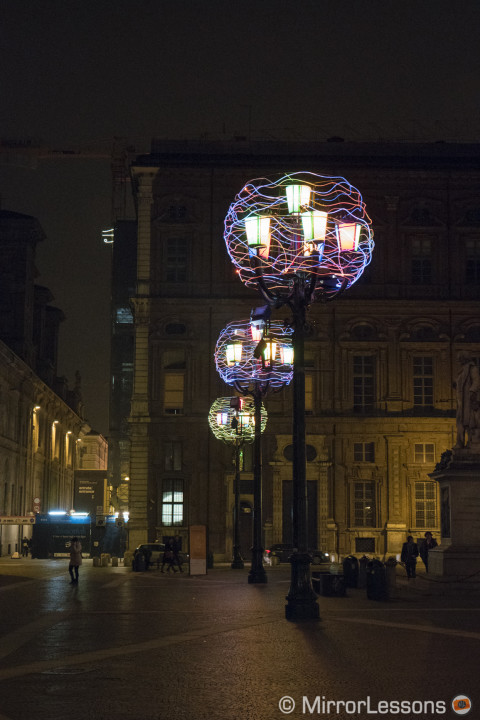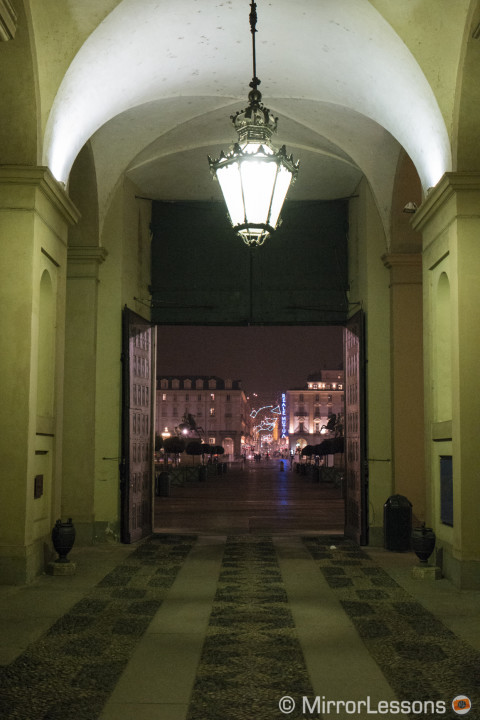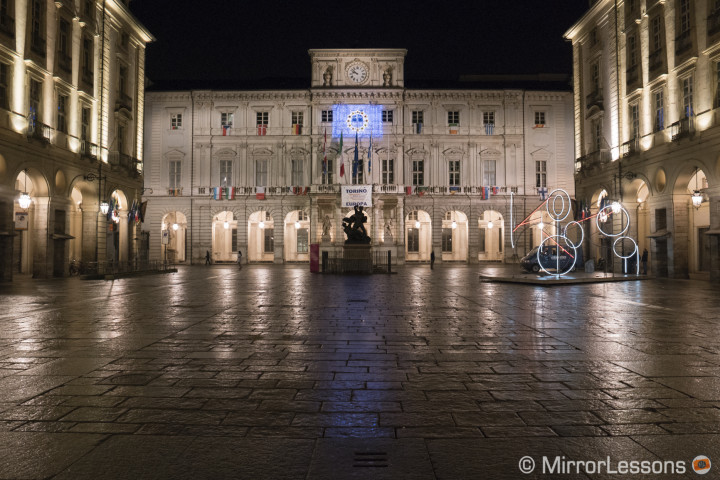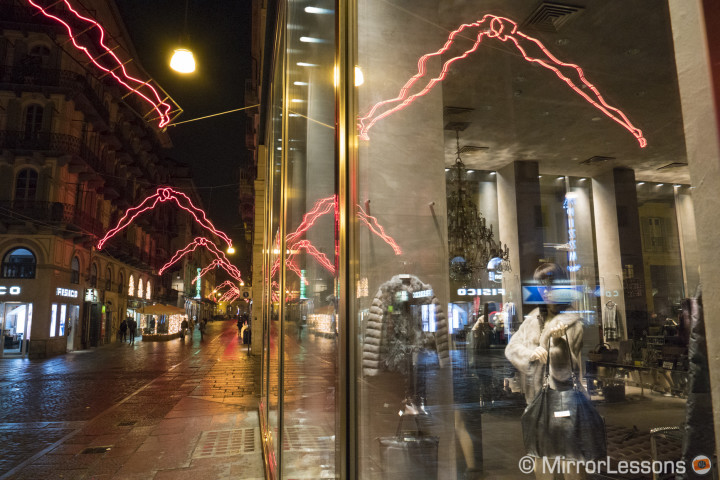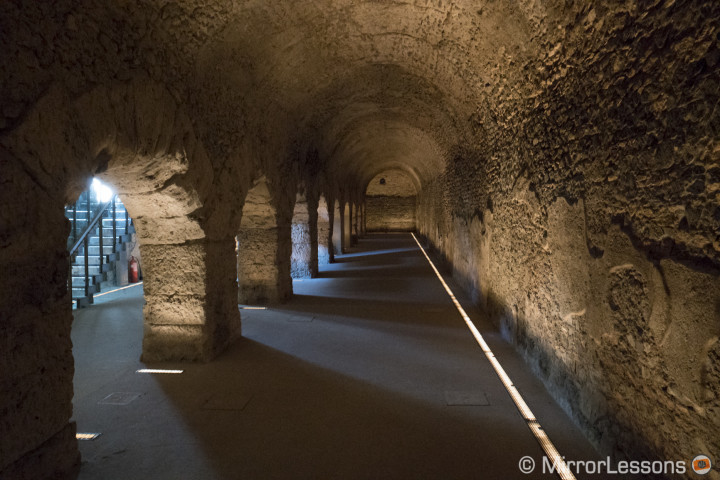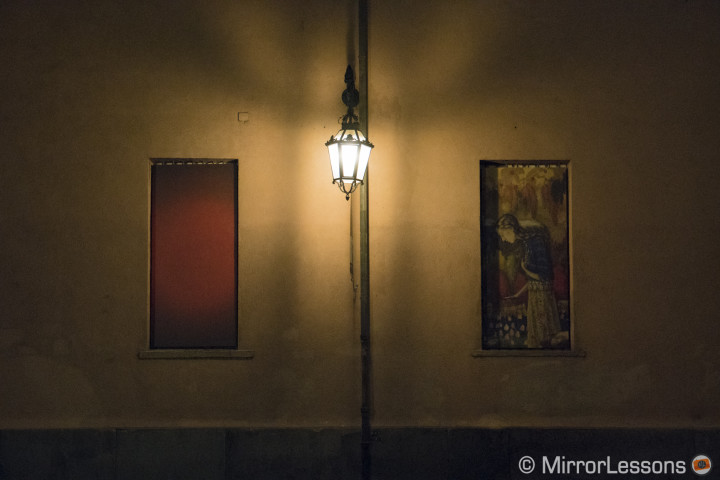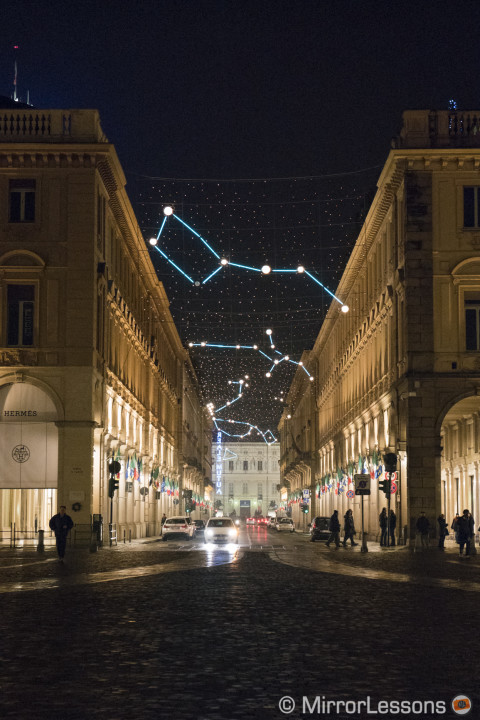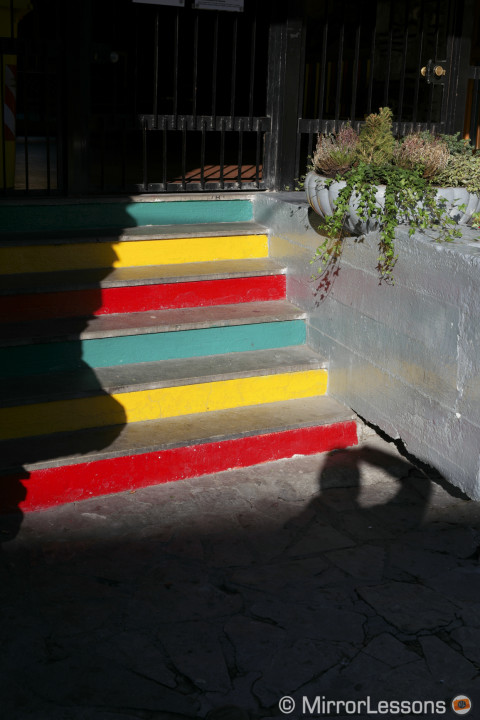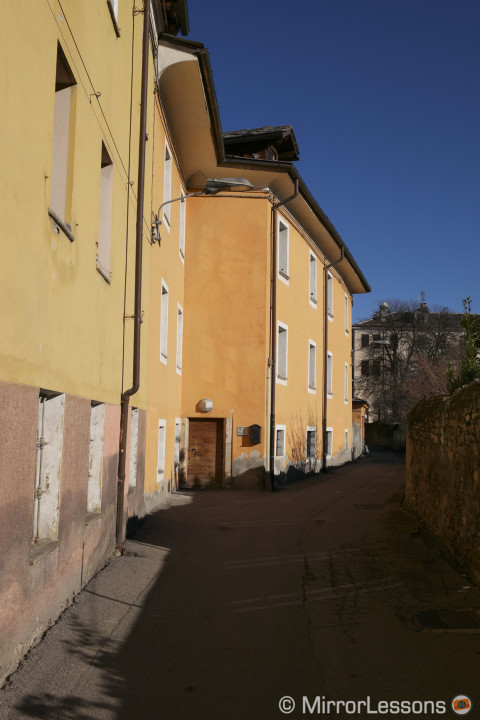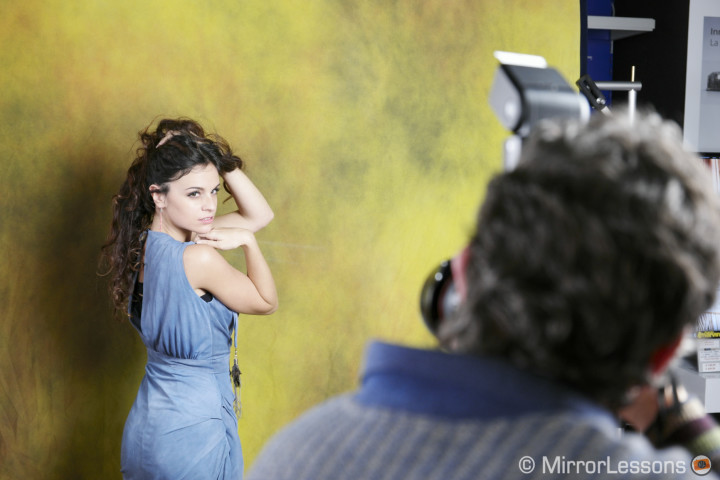Update: check out the Samsung NX1 full review!
The most interesting announcement at this year’s Photokina was without a doubt the Samsung NX1, the newest flagship camera designed to prove that the giant Korean company is getting serious about photography. However, even with the NX1’s impressive specs, Samsung’s road to success is fraught with challenges. The biggest of which will be to achieve recognition as a serious and reliable photography brand despite being better known for its many other electronic products.
On paper, the NX1 seems to have claimed the title of the best mirrorless camera. But is it really the game changer it aspires to be? Let’s find out!

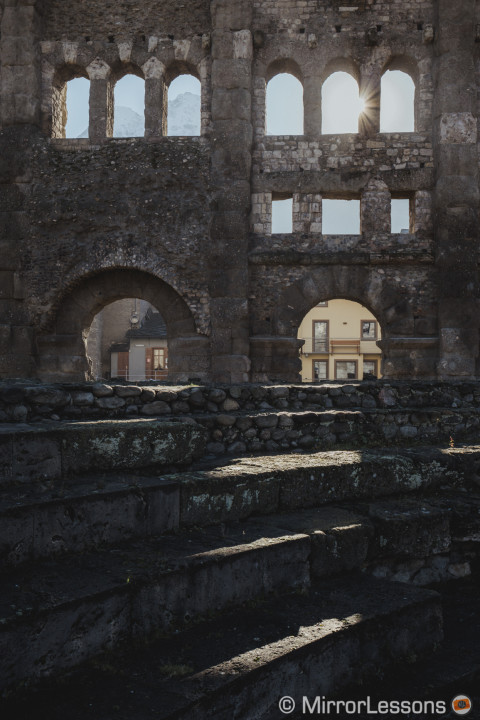
Samsung NX1 Main Specs
- Sensor: 28 megapixel APS-C BSI CMOS sensor
- Lens system: NX-mount
- Weatherproof: Yes (Splash and dust proof)
- Internal Stabilisation: None
- Autofocus: Hybrid (209 contrast detection AF points and 205 phase detection AF points)
- Continuous shooting: 15 fps (AF-S and AF-C)
- ISO Sensitivity: 100 – 25600 ISO (extended 51200)
- Shutter Speeds: 1/8000 to 30 seconds
- Viewfinder: XGA OLED electronic viewfinder with 2,360k dots, approx. 100% FOV coverage and 1.04x magnification (APS-C)
- LCD Screen: articulated 3″ AMOLED touch sensitive monitor (1036k dots)
- Movie recording: 4k up to 30fps, Full HD up to 50p, Slow motion up to 100fps, H265 codec
- Built-in Flash: Yes
- Extra Features: WiFi, NFC, Bluetooth, Timelapse, HDR, Smart Filter, Auto Shot
- Dimensions: 138.5 x 102.3 x 65.8mm
- Weight: 580g (including battery and memory card)
N.B.: This article is based on my initial thoughts after the first few days of use. It is the first Samsung camera I’ve used seriously and will fully review on MirrorLessons. (Heather wrote a first impressions article about the NX mini here). There are so many things to test and I want to take the time to do it properly. I will also share my thoughts along the way on our social networks so make sure to follow us on Facebook, Twitter, Google+ and Instagram!
Ergonomics and ease of use
The first thought I had at the Cologne show in September when grasping the camera for the first time was: this feels like a DSLR! And this very thought has now been confirmed. The NX1 is literally a DSLR without the mirror, especially when paired with the 16-50mm f/2-2.8. The combo weighs almost 1.2kg. Granted, you can use smaller lenses with the NX1 and Samsung actually has a good selection of pancake lenses. However, I chose the 16-50mm because of its fast aperture, versatility and to test the system for professional use. Below you can see a few comparison pictures of the NX1 taken beside the OM-D E-M1, Fujifilm X-T1 and Panasonic GH3.
Is this a bad thing? Well, it depends how you look at it. One of the main reasons people switch or invest in a mirrorless camera is for its portability advantages. It is the reason I personally switched to the M4/3 system for work, so using the NX1 takes me back to the days when I was using my Nikon DSLR. Just as a reference, a Canon 7D mark II and the EF-S 17-55mm f/2.8 (both designed for the APS-C format) weigh approximately 1.5kg, so they are close.
A funny thing that happened in Aosta in the Italian Alps while visiting the Roman Theatre ruins is that a couple of people asked me to take their photo with their smartphone or compact camera. I could tell that they chose to ask me instead of other people because of how I looked with the NX1. One guy even made a joke when handing over his compact camera saying “Sorry, I know this is not even close to what you’ve got”.
Now I don’t want to “crucify” the NX1 because of its size. It is probably the largest MILC around but I haven’t felt any sort of fatigue while walking around with it so far. (I can also thank the Peak Design Slide for that).
And there is also a positive aspect to the size and that is the great ergonomics and grip of the camera, perhaps one of the best I’ve tried. The camera feels solid in the hand. The DSLR shape helps but Samsung also did a very good job with the placement of the buttons and dials. The LCD screen on top is a great addition that is missing on any other MILC. The Fn button works as a quick menu to bring up the main settings. My only complaint so far is that some buttons are a little too small and difficult to reach just by feeling for them with your fingers. This applies to the exposure compensation button and the four buttons on top of the Drive dial.
The detail, brightness and colour of the EVF and monitor screens are among the best I’ve used. The EVF has a time lag of 5ms which is on par with the best EVF on the market, that of the Fuji X-T1. One thing I noticed is that the image in the live view tends to look brighter than the actual exposure. I haven’t found an option in the menu to turn the real time exposure preview off or on. It seems that the NX1 live view is configured to give you an optimal preview regardless of your exposure settings. For this reason, it is important to always keep an eye on the metering indicator.
The camera menu is different than most other cameras so I still have to become more familiar with it. I did notice some options that aren’t present on other cameras. For example the camera includes several picture profiles (Picture Wizard in Samsung language) but there is also the option to turn them off. However leaving it to off or using the standard profile is the same. Turning them off is probably an easier alternative to reset the picture profiles if you like to customise many of them (you can adjust sharpness, saturation, hue, RGB color and contrast). Some options have a very nice graphic interface like the Picture Wizard or the White Balance options.
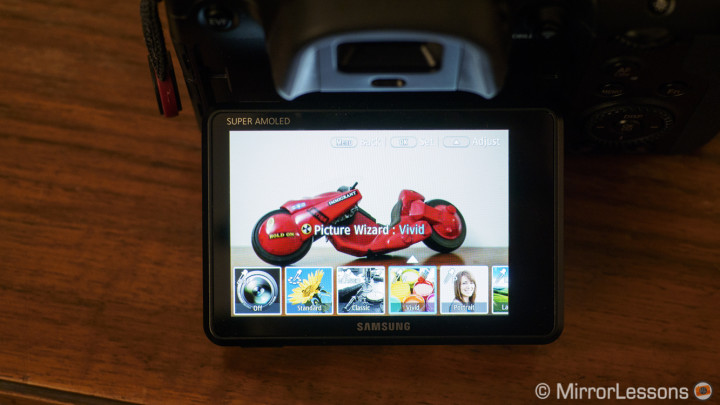
What I appreciate with the NX1 is the touch interactivity. You can tell it has been designed by a company that has knowledge about mobile software and there are a couple of nice features. For example, you can touch or swipe down from the top of the monitor to reveal a general status screen that indicates battery level and storage capacity, and also lets you adjust the brightness of the screen or turn the Wifi and Bluetooth on or off. What’s more, all menus and sub menus can be navigated by touching the screen in addition to the navigation wheel on the rear.
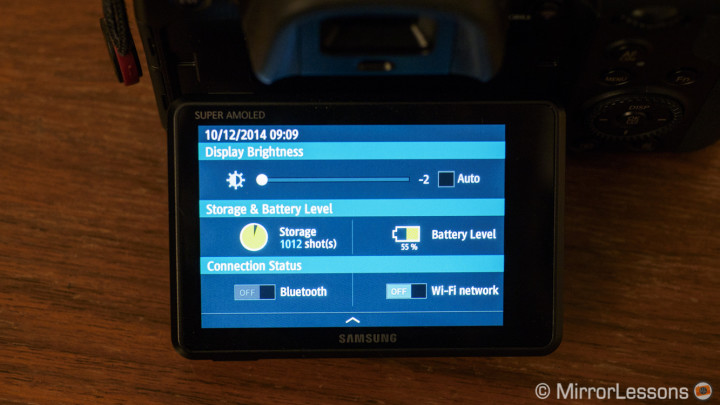
I haven’t done a lot of customisation yet. I set the exposure compensation function to the i-Function button on the lens as I find it easier to use than the default button. I moved the ISO selection to the Navigation wheel and the movie mode to the down arrow of the wheel since the main mode dial doesn’t have a movie mode. I noticed that while the camera offers some level of customisation, there are some buttons that are pre-selected for one type of function only. For example, the preview button on the front has only four options to choose from and to change the focus point position I can only use the OK button and not the arrow pad directly.
Image Quality
This is perhaps the most surprising aspect of the new NX1: the pictures look really really good. The camera features a new and unprecedented APS-C sensor with 28 megapixels and BSI technology. BSI means that the sensor is back illuminated and gathers more light than traditional CMOS sensors. What I’ve seen so far is very promising. This could easily be the best APS-C camera on the market.
First the level of detail and resolution is very high which could only be expected from a 28 megapixel sensor. (By comparison, the Sony a6000 has a 24mp CMOS sensor.) The JPG engine also seems to be one of the best on the market.
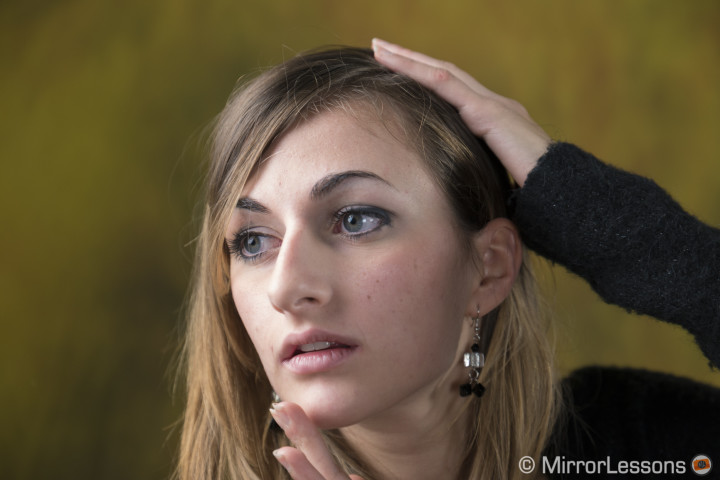

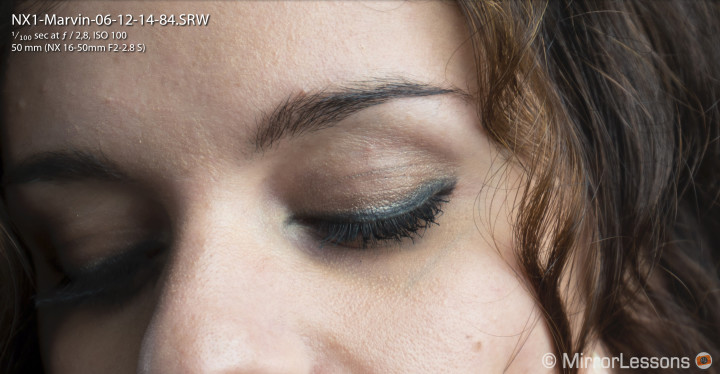
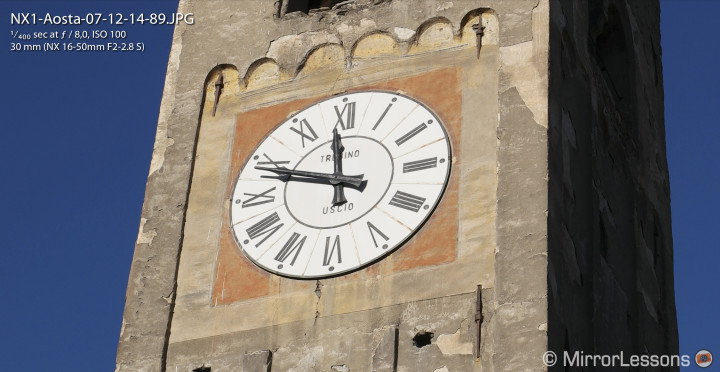

Dynamic range is also another strong and surprising point of the NX1 for both shadows and highlights. The amount of detail retained in what looks like overexposed or underexposed areas is impressive when post-processing the RAW files. Dynamic range can be really good for JPG files as well. The NX1 also has a Smart Range+ feature that opens the shadows more.
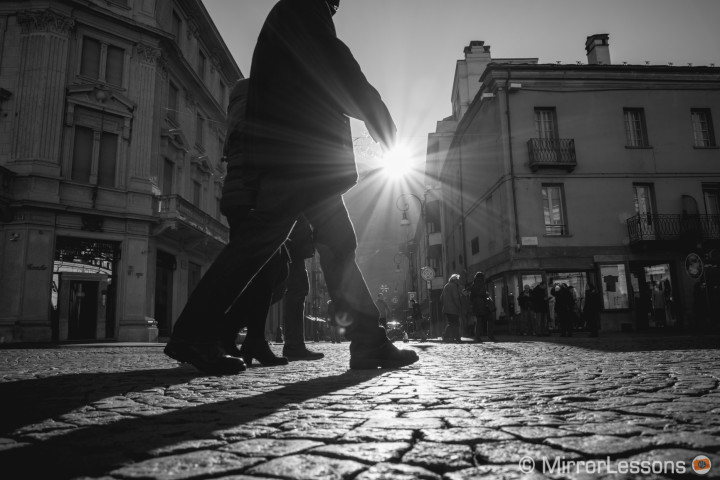
The camera also surprised me regarding its low-light performance. Up to 6400 ISO, I found noise to be quite unintrusive and the pictures retain a lot of detail up to 3200 ISO.
At 6400 there is an inevitable loss of detail but it isn’t dramatic, which is a very good result considering that the native ISO range starts at 100. The files are still pretty usable at 6400 but you lose some post-processing versatility. If you play too much with the shadows, you can see some banding. This doesn’t happen at 3200.
What surprised me at high ISOs is how well the highlights are preserved. Overall the dynamic range remains constant throughout the sensitivity range. On the JPG front, the NR reduction is quite aggressive. There are three levels you can choose between. I chose Low which should be the least effective of the three, but at 3200 ISO you lose details and see something of a watercolour effect. It is evident when you look at the pictures at 100%, so it isn’t a big deal. At 6400 ISO, on the other hand, it is more visible.
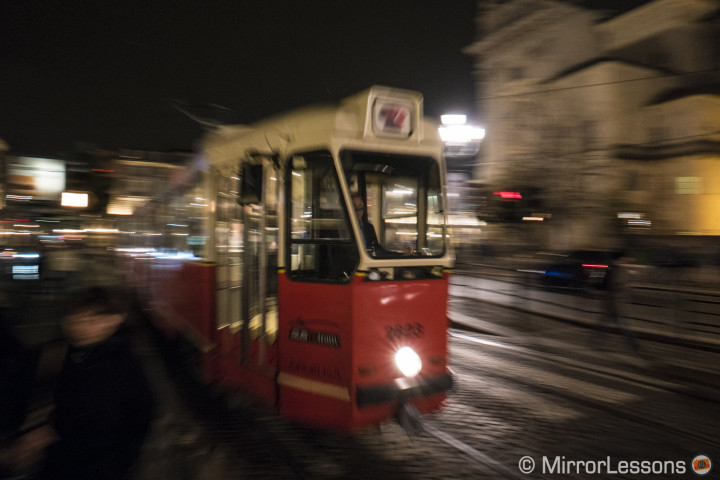
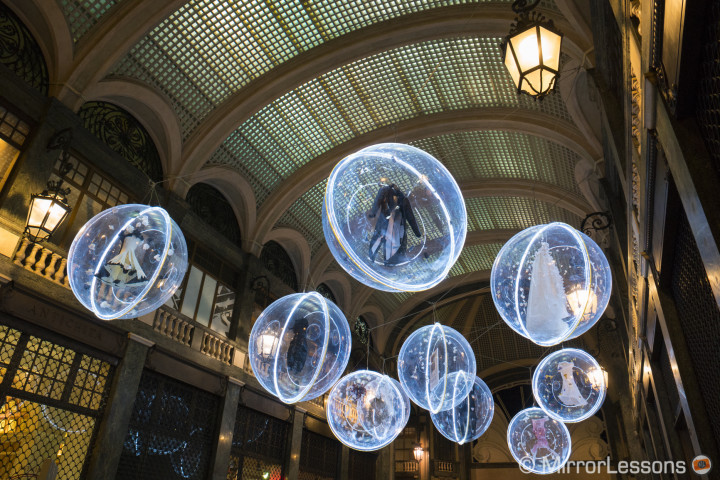
Past 6400 ISO, as the tradition goes, you start to lose details and the amount of noise is considerable. You can see an example below shot at 25600 ISO in the worst conditions possible: a dark statue against a dark sky. Stull, it isn’t bad at all considering the extreme lack of light.
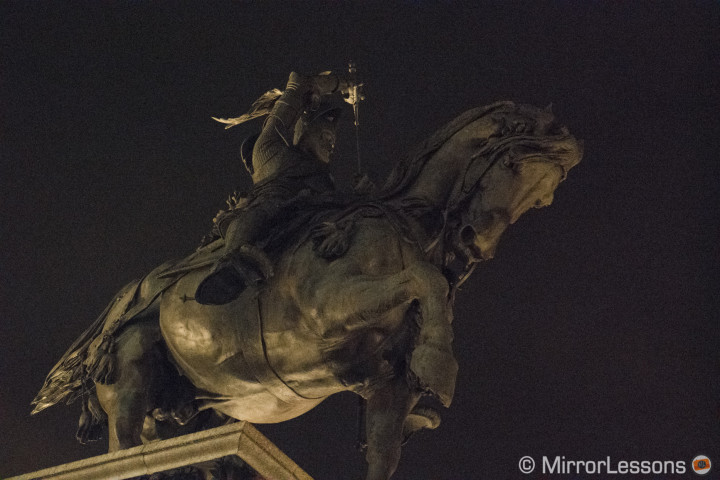
As for colours, my first impressions are very positive as well. The original colours of the OOC JPGs have a natural and vibrant rendition even with the Vivid Picture Wizard activated. Colours can really pop (maybe sometime too much). With the standard profile I am less impressed for now. There is a lot of customisation that can be done among the colour profiles, and I guess it is just a matter of getting the right settings. The portrait profile lacks a little bit of colour vibrance but the rendering is well-balanced even if it can tend towards a yellowish tint. With the RAW files in Lightroom, I get a magenta dominance especially for the skin tones. It needs a little bit of work. Note that all the shots were taken in Auto White Balance.
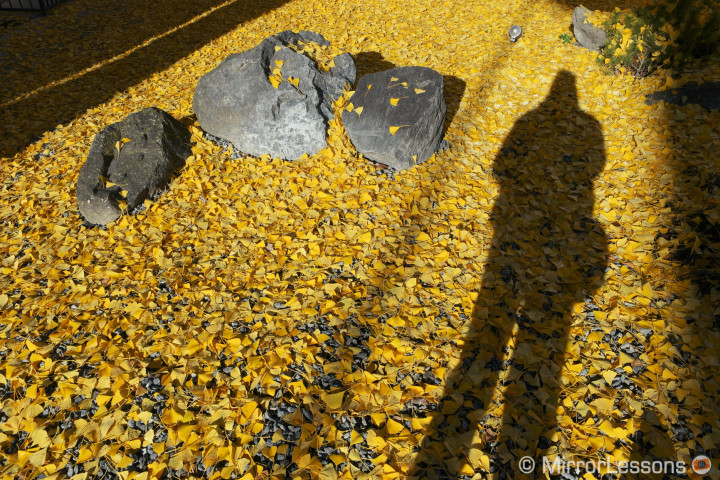

I have to say that Lightroom 5.7 doesn’t seem to digest the SW2 RAW files well yet. When you open them you lose some sharpness and there is also visibile chromatic aberration on almost every horizontal and vertical line but fortunately the automatic correction of the software eliminates them easily.
Update: Adobe released a new version (5.7.1) that fixes the chromatic aberration issue with the NX1 RAW files.
Autofocus and performance
The NX1 autofocus is fast. I haven’t had the chance to do an action test in AF-C and Tracking yet but in AF-S with the 16-50mm, it locks on in almost on any situation. The camera features an impressive hybrid AF system with 205 phase detection points and 209 contrast detection points dispatched over the whole surface of the sensor. In addition to Single AF and Continuous AF, there is also an Active AF mode that switches between single and continuous if the subject moves toward the camera. I’ve only done some homemade tests for now but it does seem to work. You need to have the shutter release button half pressed to make it effective. You can choose between single, multi and face detection points. The multi seems to work well at detecting the subject and the amount of points necessary to focus.

In low-light, the performance decreases a little but remains good in my opinion. You might hear the lens moving the elements inside slightly more but the locking time remains fast. Occasionally it will hunt in darker areas like any other MILC. It doesn’t seem to be the fastest AF on the market but I’ll reserve judgement until I attend some sporting events or other interesting situations featuring subjects in action.
One weird option with the camera is the AF Tracking mode that you can only select by touching the screen. The NX1 has two AF menus: one to select the AF mode (Single, Continuous or Active) and one that is called Touch AF. The second menu can be activated by touching the dedicated ICON on the left of the screen. You can decide to use the touch screen to set the AF point location, set the point and focus, take a shot or use AF tracking to make the AF point follow an element inside the frame. The final option can be useful for sports for example but the fact that you need to touch the screen to select a subject and start tracking is somehow less professional. I think that touch capabilities need to be an addition to the main buttons and dials, not a replacement. This is why I am so fond of the Panasonic GH4–it has every external dial and button you could dream of.
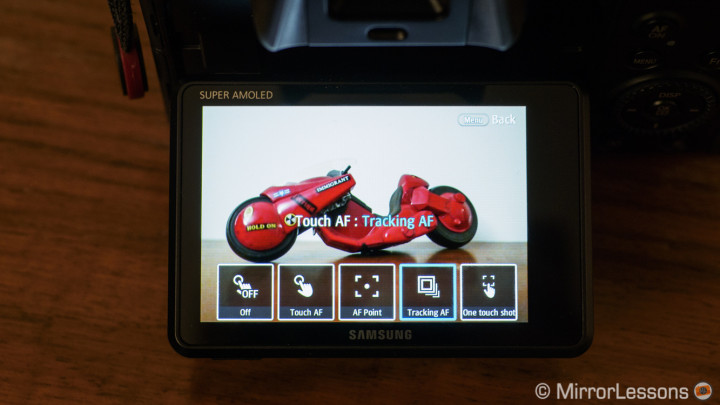
One of the most impressive features of the NX1 are its continuous shooting capabilities, which go up to 15fps. The speed is stunning and the buffer capabilities are impressive from what I’ve tested. What I also really appreciate is the easy way in which you can select the speed for the High burst mode (from 8 to 15fps).
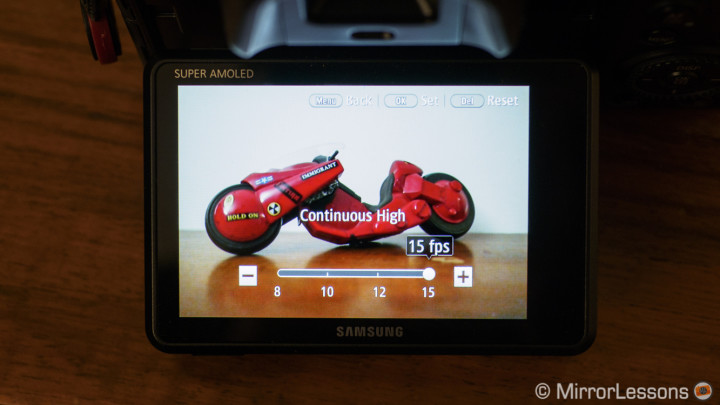
Perhaps ‘speed’ is a word that applies to the entire NX1 experience. The camera tuns on pretty quickly and the powerful DRIMe V seems capable of performing any operation without slowing down. When the camera is on, you can hear the tiny noise of the fan inside the camera that cools down the processor.
The NX1 doesn’t include built-in stabilisation but relies on its lenses which feature OIS. With the 16-50mm I obtained good results down to 1/5s.
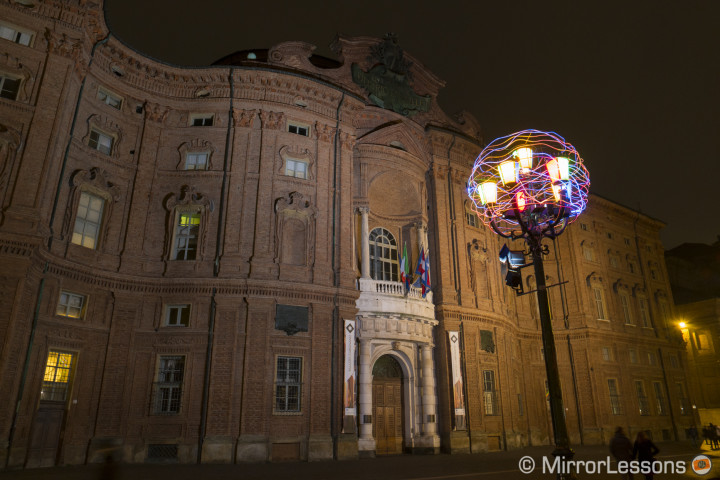
There are many other characteristics to test but for now I’ll highlight two of them.
The first is the shutter sound–a very quiet and discreet ‘thud’ that is pleasant to the ears. Actually, I’ll go as far as to say that I love it–it is audiable but at the same time people around you won’t hear it. There is also an electronic shutter option that uses an electronic first curtain and a second mechanical curtain. The sound difference between the two is negligible.
The second thing worth talking about concerns connectivity because the NX1 has so many more options than the usual Wifi functions of other cameras. You can connect your smartphone to the Camera Wifi network and either select or save photos to your mobile device or control the camera remotely from it. That’s what most cameras do these days. With the NX1, there are more features that unfortunately will only work on Android Smartphones. For example, by connecting the two devices with Bluetooth, you can shoot with the camera and automatically save a low resolution copy to your smart device. You can also send a photo via email. You just connect to an available Wifi network, select a photo and send it via email to someone. The steps to do it are really easy and quick and it works well. Often when shooting an event, a client may ask me to send a couple of pictures right away for a press release (especially if there are awards involved). With the NX1 it is something you can do very easily without the need for an external device.
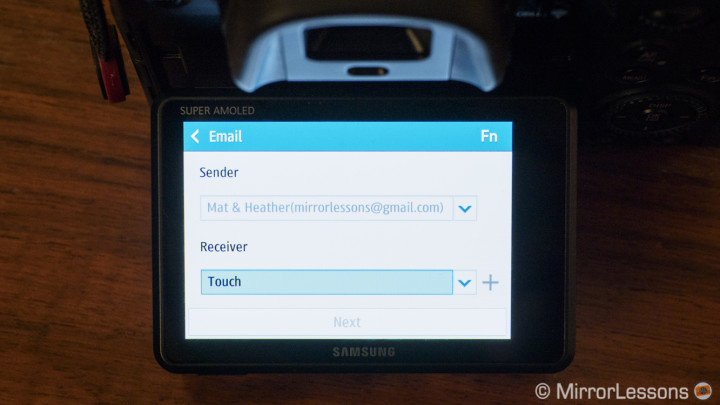
But I must admit that I was excepting something more from a flagship camera made by a company that clearly has lots of knowledge and technology regarding connectivity. Sending a picture via email is a nice feature but why not implement more options like the ability to store pictures in the Cloud while shooting? Some news and sports photographers would love that. Imagine shooting an event with the camera while automatically sending photos at a low resolution to a shared folder in the Cloud so that an assistant can instantly select some pictures and publish them somewhere.
What’s more, I haven’t found any option to tether the camera to a computer (you can only backup photos). I think that sharing is one of the key points that will allow Samsung to differentiate itself from the competition, and the way to do this is to include sharing features that make a photographer’s workflow easier and more effective than his or her competitors. I hope that they are working on this and that there will be firmware upgrades in the following months.
The battery life also seems very good. The NX1 battery is big (similar size to the GH3/GH4 batteries). During our day trip to Aosta, it dropped down to 34% after approximately 6 hours of use and 200 pictures. I think that with more extensive use the battery would run out more quickly.
On a final note, I deliberately skipped the video functionalities because of lack of time. The NX1 can shoot 4k video and Slow Motion Full HD up to 100fps with an entire new codec, the H265. It is on my list of things to test.
Conclusion
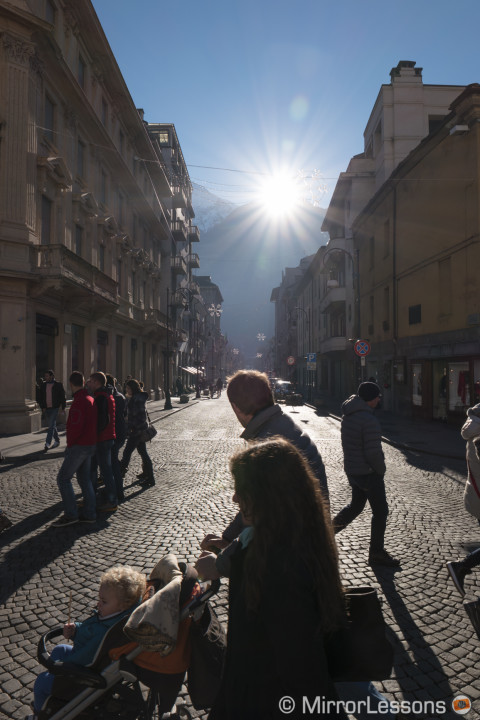
Overall the Samsung NX1 seems to be a very powerful camera. Image quality is there and it is exceptional for an APS-C sensor. Speed is there, autofocus is there (from what I’ve tested so far) but most importantly, it is a camera body bursting with potential. The hardware and software inside are apparently the most advanced a camera has ever possessed, and judging by this interview here, it looks as if the body has been designed to receive significant firmware upgrades in the future that go beyond what most other companies can offer.
I personally think that Samsung needs to focus on characteristics that can give it a clear advantage over its competitors. Why? Because as good as the quality and performance of the NX1 is, it stands to face many competitors, many of whom are from the DSLR realm. Not only, but I sincerely doubt that a 28MP BSI sensor is enough to convince photographers to embrace the system. As I mentioned above, connectivity might be the key to this.
From a certain point of view, it might be more logical for the NX1 to compete directly with DSLRs than other MILCs. Regardless of whether or not this is the case, I remain curious (as are we all!) to see if this is just the tip of the iceberg of what Samsung has to offer.
What are your thoughts about the new Samsung NX1? Is it a camera that interests you?
Update: check out the Samsung NX1 full review!
